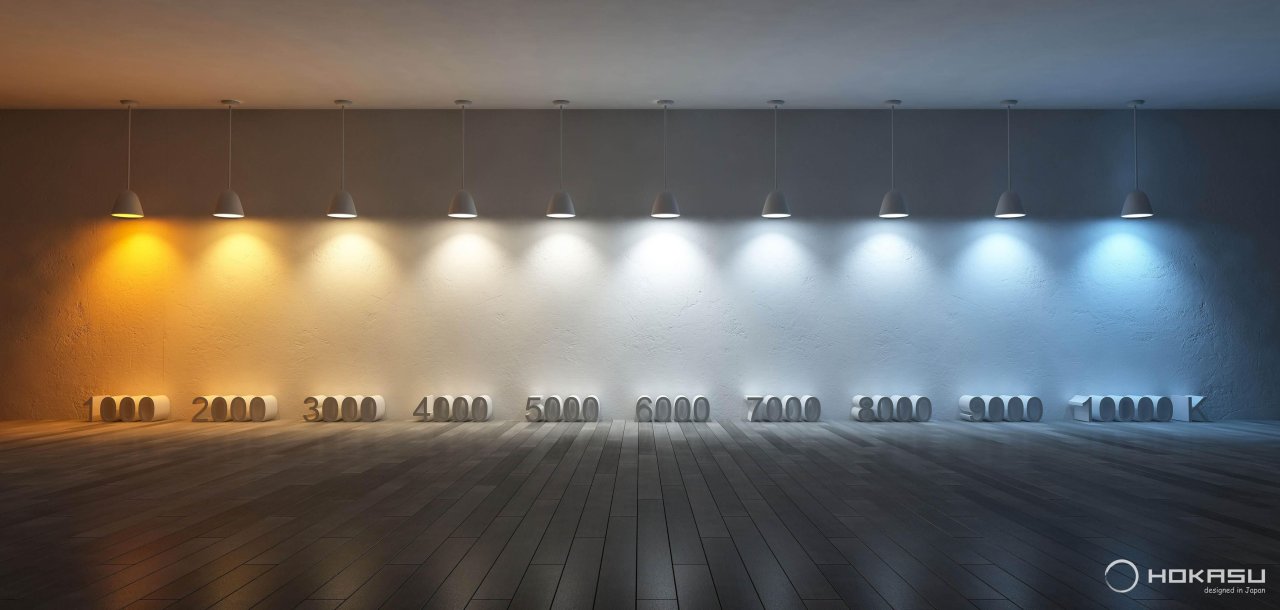Cookies are used for optimal website experience.
Color temperature (Kelvin)

By definition, the color temperature is the temperature of a perfectly black body at which it emits radiation of the same color tone as the radiation in question, measured in degrees Kelvin.
In other words, the color temperature determines the "shade" of light emitted by a source (lamp or luminaire), from warm, close to incandescent, giving off "yellowing" to cold white light (cool fluorescent lamps) giving off into the blue area of the spectrum.
Consider color temperature gradation:
An approximate division of gradations:
- Warm White (2700-3200К)
- Daytime White (3500-4500К)
- White (5000-6000К)
- Cold white (6000-8000К).
Color temperatures of the most common light sources
The exact color temperature of light sources is indicated on the packaging or in the accompanying product documentation (product data sheet, technical description). Below we give the values of common light sources.
Sources with the same color temperature can differ in the color tone of light: The diagram below shows that all light sources whose measured chromaticity values lie on the same line drawn perpendicular to the black body radiation curve have the same color temperature.Radiation curve of a perfectly black body in CIE color space 1931
Human perception of color temperature
The choice of the correct color temperature of the sources affects the emotional impact of the environment, the perception of the appearance of objects and their colors. It is important that different light sources are associated with different environments. For example, the warm light of a candle has a relaxing effect, the white light of a daylight lamp creates a working atmosphere, the cold light creates a greater contrast, and is used when it is necessary to work with high color rendering.
There is a normative document that contains recommendations on the selection of color temperature in rooms for various purposes: SNiP 23-05-95 "Natural and artificial lighting". In particular, it recommends warm light for living rooms, in rooms where visual work is performed - daylight 3000-4000K, in rooms with high requirements for color rendering cooler light up to 5000-6000K.
It also mentions that with a large number of green and blue objects in the illuminated space should be used sources with a color temperature of more than 4000K, with a large number of red and yellow colors - no more than 3500K. Of course, when this normative document was created the use of LED light sources was very limited, nevertheless, the information contained there can be useful and in their choice. For example, lighting diodes of cold light contain a large share of the blue part of the spectrum, i.e. emphasize blue colors, and in LEDs of warm white light the blue component is suppressed by a large amount of yellow phosphor. In addition, it is necessary to take into account the color rendering index of LED sources, as it is not always at the top, unlike halogen lamps, for example, but only in some of the more expensive models.
Human perception of color temperature as a function of illumination
The relationship between illuminance and color temperature was investigated by Kruithof. Empirically he created a graph - the Kruithof comfort curve - which identifies the areas of high and low light levels for different color temperatures that are most comfortable for observers. Color temperatures that are in the comfort range are perceived as "white" light.
It is for this reason that light from the sky is perceived as comfortable white light, although a source with the same color temperature in the room will clearly reek of blue: the illumination of the sky is very high compared to any artificial source.
The Kruithof comfort curve (nomogram)
Help in choosing
If you need help or advice in choosing LED light sources, you can contact our experts by phone.We also look forward to receiving your emails: sale@hokasu.com or messages in online consultant on our website.
We can also do calculation of the light of your project: send your contacts and information about the project to sale@hokasu.com and our manager will contact you!
04.05.2024

